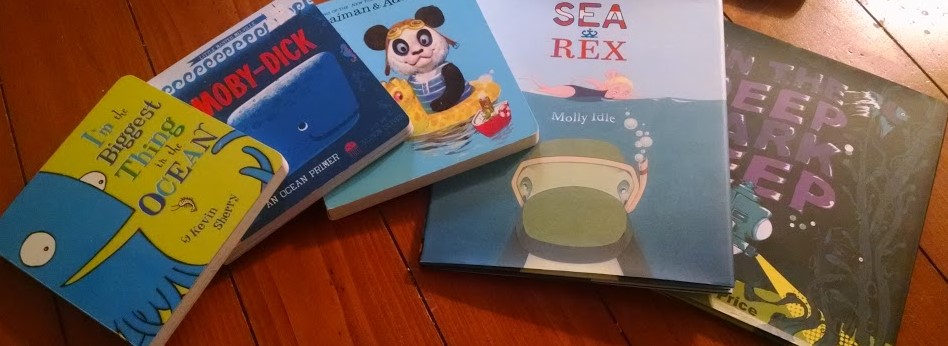
As a few of you have noticed, we recently added a tiny new member to our little ocean outreach empire. A new baby opens up a chance for us to explore a whole new world of ocean-themed content tailored to our newest explorers. As a family of marine biologists, we very quickly accumulated a massive library of ocean-themed baby books, some amazing, some not-so-amazing.
After critical review by two PhDs in Marine Science and Conservation, for both scientific accuracy and pure delightfulness, here are my top 5 baby books to get your ocean education started off right.
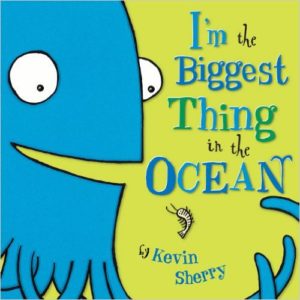 I’m the Biggest Thing in the Ocean by Kevin Sherry.
I’m the Biggest Thing in the Ocean by Kevin Sherry.
Sherry must have written this book specifically for me, since Sizing ocean giants: patterns of intraspecific size variation in marine megafauna is already my most widely distributed paper. I know a few things about giant squids. I really love this book. The art is colorful and engaging. The story has a hilarious twist. It’s grounded in real ocean critters (though there’s something funky going on with that jellyfish). And there’s an important lesson about hubris and trophic position in marine food webs.
Also, squid.
The next step: There are lots of great big sea creatures in this one. As your kid gets older, introduce her to other ocean giants like whale sharks, deep-sea isopods, mola mola, and the magnificent colossal squid!
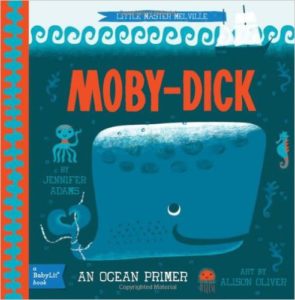 Moby-Dick: An Ocean Primer by Jennifer Adams and Alison Oliver.
Moby-Dick: An Ocean Primer by Jennifer Adams and Alison Oliver.
It’s never too early to introduce you new shipmate to the greatest American novel. Melville’s Moby Dick may be a little too advanced for a toddler, but this little gem captures the mood with good, evocative art, a selection of child-appropriate quotes from Melville (“Better to sail with a moody good captain than a laughing bad one.”), and an introduction to the characters and creatures that make up this epic tale.
If her first word is Starbuck, that’s fine with me.
The next step: Little known fact, a whaling harpoon is lobbed, underhand, into the air, rather than hurled overhand like a spear. Once your little sailor is able, start her off right by showing her the proper way to hunt the white whale.
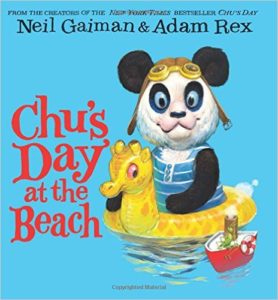 Chu’s Day at the Beach by Neil Gaiman and Adam Rex.
Chu’s Day at the Beach by Neil Gaiman and Adam Rex.
People sometimes ask me what’s the most surprising thing I’ve learned after becoming a father. The answer: Neil Gaiman writes baby books. Neil Gaiman writes baby books and they are absolutely fantastic. Chu’s Day at the Beach is classic Gaiman, fantastical, funny, and brilliantly crafted. The art is phenomenal, some of the best I’ve seen in a children’s book. It captures the essence of ocean animals while just anthropomorphizing them enough to be adorable. It’s Gaiman, so embrace the magical surrealism, but in terms of fostering a love of all things ocean, this one is hard to beat.
Plus, there are Mer-pandas. Mer. Pandas. Win.
The next step: Crush your child’s dreams by waging a four-year campaign against mermaid conspiracy theories culminating in popular and scientific publications.
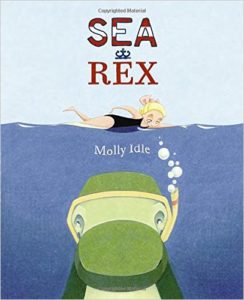 Sea Rex by Molly Idle.
Sea Rex by Molly Idle.
Interdisciplinarity matters, especially when building your child’s first library. Just because we love ocean books, doesn’t mean we can’t love dinosaurs, too! Sea Rex is less about the ocean and more about how to have fun at the beach, with your friends, who happen to be dinosaurs. And for that, we adore this book. More great art (really, all these books have great art, that’s at least half the fun of a children’s book) and some good little lessons about how to play safely at the beach.
And dinosaurs, so many dinosaurs. Dinosaur lifeguards. Dinosaur swimmers. And a Tyrannosaurus wearing a wee little sailors cap.
The Next Step: Does you child love dinosaurs? Now’s a perfect time to get her a pet chicken and explain how evolution works and that avian dinosaurs are all around us.
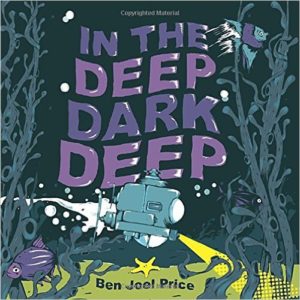 In the Deep Dark Deep by Ben Joel Price.
In the Deep Dark Deep by Ben Joel Price.
You had to know this was coming. Deep-sea submarines, robots, exploration in the darkest depths, this book is primed for me. The art is dark and moody, the writing is lyrical, there’s just enough sense of drama in the pages. Of all the books here, this one is the most story driven (which, let’s be fair, is more for the parents than the toddler). I have some questions about the submarine design, but that’s ok since I can just outline how hydrostatic pressure functions with depth on the whiteboard over the crib.
This is also the sharkiest one, which some of my co-bloggers will enjoy.
The next step: We’ve taught students as young as 2 how to pilot underwater robots, so get to it.
Hey Team Ocean! Southern Fried Science is entirely supported by contributions from our readers. Head over to Patreon to help keep our servers running an fund new and novel ocean outreach projects. Even a dollar or two a month will go a long way towards keeping our website online and producing the high-quality marine science and conservation content you love.
As in previous posts, you’ll notice that we’ve used Amazon affiliate links throughout. We get a small commission when you purchase something through those links, which helps keep Southern Fried Science online.